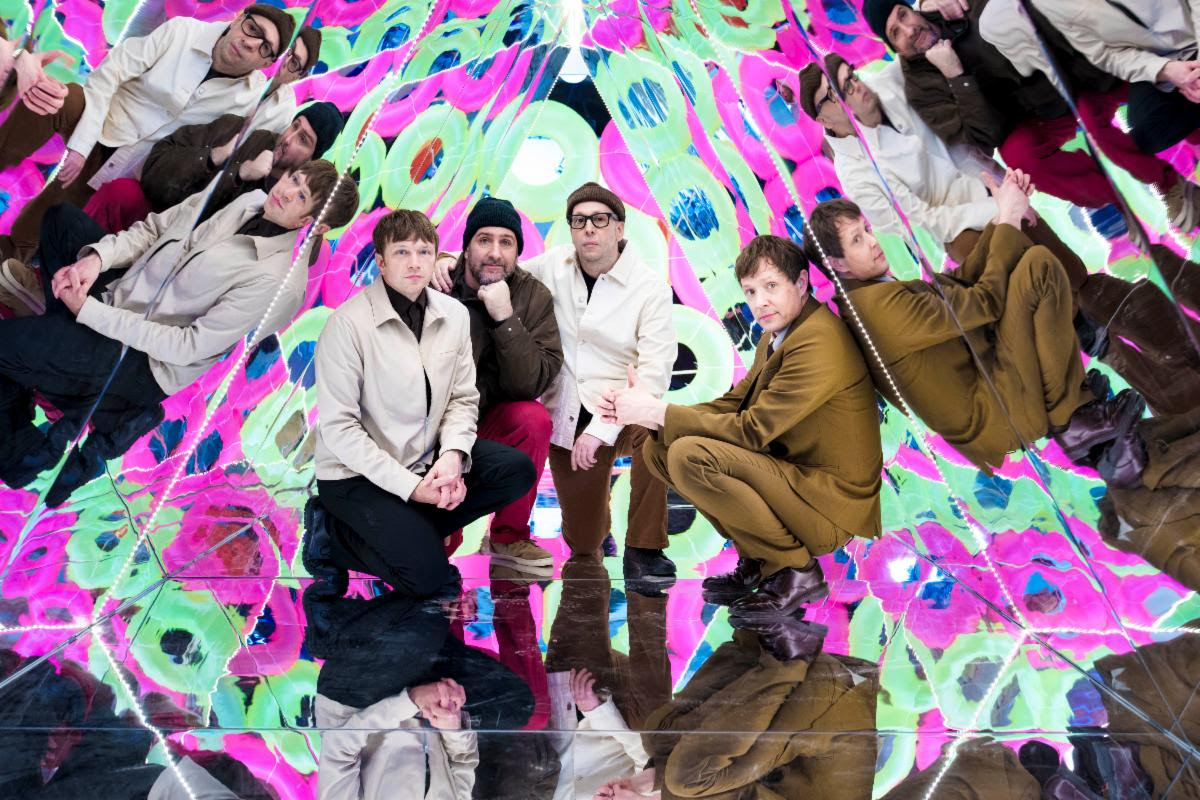
via Universal Pictures
We all know the archetypal horror movie haunted house—slouched, rotting porch, frayed curtains, dark, abandoned rooms crowned with creaking chandeliers.
In two of this year’s best films, Leigh Wannel’s Invisible Man and Boon Jong-Ho’s Oscar-winning Parasite, a new kind of haunted house emerges as a central character. In appearance, these houses couldn’t be more different from the classic haunted mansion. Modern, glamorous, and clean, filled with large windows and light, the houses are symbols of overwhelming luxury, the supposed end result of consumerist freedom.
But as the films progress, the houses turn into loci of violence, and, ultimately, they act as symbols for privilege and neoliberal capitalism at its most violent. If haunted houses embody our deepest personal and cultural fears, these houses are haunted by money.
The House in Invisible Man: Elizabeth Moss Flees Silicon Valley
Invisible Man stars Elizabeth Moss as Cecilia, a woman who flees an abusive relationship only to be stalked by an invisible version of her ex-lover. It’s as creepy as it sounds, but one of the film’s eeriest scenes is the very first sequence in which Moss tries to escape from her boyfriend’s hyper-luxurious oceanfront property.
Her boyfriend’s name is Adrian, and as we hear several times, he’s a pioneer in the field of optics, some sort of Silicon Valley master of mind control and optical illusions. His home is equipped with a massive bed below a wall-sized window that overlooks the ocean. It’s studded with cameras and completely devoid of chaos or signs of human existence; it’s essentially been bleached of life.
As we discover later, Adrian is an obsessive control freak, but even without knowing this, the house feels prison-like, its luxury a warped, dystopian facade. Moss’s character, Cecilia, might as well be living in a fishbowl or an Apple store.
In the modern horror movie house, since all signs of life—beautiful or terrible—have been scrubbed as clean as the countertops, ghosts and demons collect in basements and antechambers. In Adrian’s walled, palm tree-rimmed home, the lower floor is full of futuristic technology, creepy suits and cameras trapped in glass cases. Everything is visible, arranged as neatly as a newly reset iPhone’s home screen, but because of the home’s hyper-visibility, privacy is not an option. The house’s inhabitants are constantly under surveillance.
With its silver and blue tones, like flashing screens of death, Adrian’s beachfront property seems like a commentary on the excesses and illusions of Silicon Valley—a new monster if there ever was one.
“The Invisible Man is a physical manifestation and exaggeration of the queasiness with surveillance capitalism: the feeling of someone watching you, of someone stringing together the clues you didn’t mean to leave, of someone – a person, a company, the algorithm – knowing more about you than you know about yourself,” writes Adrian Horton for The Guardian.As tech companies track our information and influence our elections, and as we teeter on the edge of an AI revolution, and as we remain glued to our phones despite our best efforts to pry ourselves away, the supposed modern luxury of technology often feels like an invisible stalker, a shadow that could—feasibly, someday—overtake our lives, and consume our thoughts.
The Invisible Man and His Invisible Hands: H. G. Wells’s Gilded Class Parable
The Invisible Man was loosely inspired by a novel of the same name by H. G. Wells. It’s the story of a student named Griffin who finds a way to become invisible and uses his powers to terrorize the English countryside. It was one of the earliest works of science fiction, and like many works in the genre, it’s about the dangers of innovation.
Outside of his love for science fiction and time travel, Wells was also a passionate socialist who dedicated much of his life to the Labour movement, and The Invisible Man can be read as an imperfect parable about class. “Griffin’s invisibility symbolizes the working of an impersonal, decentralized, and—in Wells’s view—dangerously chaotic market economy, which fails to respect the dictates of either traditional communal ties or established government authorities,” writes Paul A. Cantor in Literature and the Economics of Liberty: Spontaneous Order in Culture. “In effect, what is most significant about Griffin is his invisible hand. In his Wealth of Nations, Adam Smith had argued that in an unfettered market economy, an invisible hand guides the self-seeking actions of individual entrepreneurs for the good of the community as a whole.”
The original Invisible Man oscillates between metropolitan London and the rural English countryside, and the contrast emphasizes the disjointed relationship between the two. In the new film version, Adrian’s house is the modern representation of a gilded-age London metropolis, where inequality was as stark as it is in today’s San Francisco, where the city’s massive homeless population languishes outside the doors of its tech-money elite.
That juxtaposition also defines the actual best movie of the year: Parasite.
Parasite: The Class Divide in Two Houses
Like The Invisible Man, Parasite’s narrative swivels around a single, extraordinarily beautiful home. If anything, the Park family home in Parasite is a far more central character than Adrian’s house in The Invisible Man, though the two serve similar purposes.
Parasite’s Park house is airy, spacious, and almost brutally neat. With its carefully arranged stacks of plates that seem poised to crash at any moment and its wall-sized window that overlooks a vividly green yard, it represents the ultimate new-money achievement. Of course, just like the haunted houses of yore, its grand facade is doomed to fall from the start.
“The house opens up like an elaborate jewel box, with plot elements that hinge on the architecture: hiding, eavesdropping, scheming,” writes E. Alex Jung in Variety. “More than a house, it becomes a map of class psychology and the resentment that simmers beneath the surface.”
Boon Jong-Ho meticulously designed the modernist Park home from the ground up, and every inch serves a narrative purpose. “We needed a structure and a level where Mr. Park couldn’t see Ki-taek’s family whatsoever, whether they were lying straight or on their sides,” Bong told Variety.
In a battle of luxury, the Park house is a formidable opponent to Adrian’s ostentatious mansion. In The Invisible Man, Adrian’s isolated hilltop home hides his cloak of invisibility and his abusive behavior. In Parasite, the stunning Park home—with its huge bathtubs, its vast counter space, its warm lighting and its pristine cleanliness—rests on top of class violence and oppression.
Parasite tells the story of the Kim family as they indoctrinate themselves into the Park’s lives, persuading the gullible and wealthy family to give them jobs and drinking in the illusion of their wealth until it all inevitably collapses. The film accomplishes its portrait of class divides through a purposeful use of levels. The Kim family lives below the Park family (literally below ground), crammed in a dingy half-basement half-apartment with a single window overlooking the street. Even while they’re in the Park home, the Kims are often purposefully obscured.
But all hidden things must go somewhere, and in Parasite, secrets hide below. Deep down in the bottom of the Park home is a second basement, created by the house’s original owners in case of a nuclear apocalypse. The Parks’ former housekeeper’s husband Geun-se, who is on the run from debt collectors after the failure of his cake shop, has been hiding for years.
Crowded and poorly lit, the bunker exists in dramatic opposition to the rest of the home. It’s a secret ulcer in the belly of the Park family’s charming, clean lives, which—no matter how well-intentioned they may be—exist literally on top of others’ suffering.
The only member in the Park family who comes in contact with the man living below is the Parks’ youngest son, Da-song, who once spotted Geun-sae and told his family that he saw a ghost. Of course, Da-song is right: The house is haunted, though not by anything supernatural. Similarly, the horrors in The Invisible Man aren’t supernatural: they’re horrors of science, horrors of progress and mind-control.
In some ways, Adrian’s house and the Park house are new haunted houses that symbolize new problems; they’re emblems of gentrification at its most evolved and of modern capitalism pushed over the brink of sustainability. Resolutely smoothing over their inner horrors with luxury, control, and surveillance, the houses emphasize a dissonance distinct to modern times but also universal in the human experience: So many of our grandest achievements were built on the backs of others’ suffering.
At the ends of both films, order collapses and a massive storm guides the narratives to their natural conclusions. As the illusions and lies of these houses are washed away by the rain, new voices—those of the help, the imprisoned, the female partners of successful men—are finally given space to speak. Maybe some houses are simply made to fall.
- Girl Who Pretended To Be A Man To Trick Friend Into Sex Appeals … ›
- The 50 Best Songs Of 2014—So Far! – Popdust ›
- Aziz Ansari: Sexual Assault Or Idiot At Fault? – Popdust ›
- Aziz Ansari: Sexual Assault Or Idiot At Fault? – Popdust ›
- Invisible Illness in Pop Culture: What Do Jameela Jamil and Jake … ›
- PSY Dances to “Gangnam Style” at Los Angeles Dodgers Game … ›
- Listen: New Snoop Dogg! Snoop Gets Rude with Kendra Black … ›
- Here Are the Very White Male Oscar Nominees – Popdust ›
- parasite bong joon ho oscars ›
- How to Stream All the 2020 Oscar Winning Movies – Popdust ›
- Golden Globes 2020 Nominations: 5 Surprises And 5 Snubs – Popdust ›
- #ByeOscars: Media Outlets Are Finally Starting to Boycott the Oscars … ›
- “Parasite” Needs to Win Best Picture If the Oscars Want to Stay … ›
- The Oscars Needed Parasite Way More Than Parasite Needed the … ›
- Yes, “Parasite” Is Even Better Than You’ve Heard – Popdust ›
- In Defense of Mr. Kim’s Actions at the End of “Parasite” – Popdust ›
- Why Does “Parasite” Director Bong Joon-ho Love BTS? – Popdust ›
- Who’s Really Haunting America? Deconstructing the Indian Burial Ground Trope – Popdust ›













